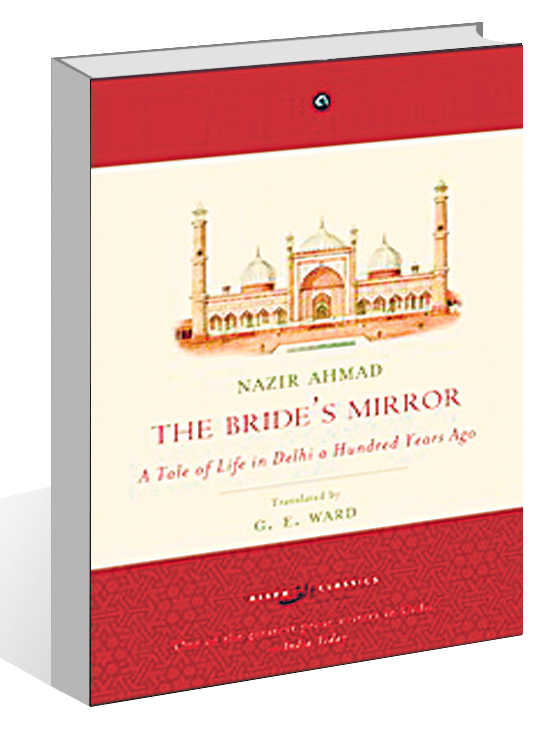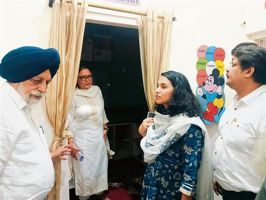
The Bride’s Mirror by Nazir Ahmad. Translated by G. E. Ward. Aleph. Pages 188. Rs 399
Pankaj Kumar Deo
Novel faced the inevitable teething troubles as a new genre in the regional literatures of India in the 19th century. It was inarguably the influence of English education and the emergence of printing press that led to the rise of novel as a new literary form in Hindi, Urdu and other Indian languages. When Nazir Ahmad, a deputy collector in British India, wrote The Bride’s Mirror (Mirat-ul-Urus) in 1869, which is considered the first Urdu novel and is set in old Delhi, no one could have imagined that it would see a new edition in the 21st century when Metro, and not ‘doolie’ as described in the novel, will be the mode of transport there.
Nazir Ahmad comes as the most unlikely person to have written a novel, which is considered a literary form imported from English literature. He was forbidden by his father from studying English at Delhi College. He considered himself an educationist rather than a novelist who wrote this novel as a how-to book for household duties of women.
Like the first English novel Pamela, The Bride’s Mirror was written with a moralistic purpose, especially for women. While its Hindi counterpart, Pariksha Guru written by Shrinivas Das in 1882 with similar didactic objectives has been long forgotten, The Bride’s Mirror has commanded a steady readership ever since its first edition.
The novel presents binary opposites through the characterisation of two sisters, Akbari and Asghari, who are wedded to two brothers. Whereas Akbari, the elder sister, is stupid and termagant, who separates from her in-laws and squanders all her money and jewellery, Asghari, the younger sister, saves her household from the clutches of moneylenders and a cunning housemaid. No wonder, the younger one is hailed as a paragon of the virtues that a woman needed to possess in the 19th century. As Asghari’s ordeal as a newlywed unfolds in a household reeling under debt, the reader witnesses the progress of a well-structured plot, reflecting unity, balance and symmetry that are essential ingredients of timeless fiction. The two sisters as binary opposites — one described as Mizajdar, the other as Tamizdar — further help to thicken the plot and present contrast for the purpose of women’s moral education. At the core of the book is the evolution of Asghari’s character from a bashful bride to an assertive housekeeper. She is far ahead of her time if one looks at her commitment to women’s education for which she opens a school. She explains to the girls who come for study how Queen Victoria, despite being a woman, runs the British Empire as efficiently as any man would.
Part of the novel’s charm emanates from the description of its locale of Old Delhi, which remains stuck in a time warp, although women on scooters — not ‘doolie’ — crisscross it now. Places such as Jauhari Bazaar and Katra Neel come alive in the novel; these places still represent the life that was there in Delhi nearly one-and-a-half century ago.
Aleph has published this novel in translation as part of its series of books “aimed squarely at the 21st century reader”. It is difficult to say whether the millennial generation would be able to relate to the characters of this novel and their moral universe. However, the novel is a must-read for all those who love the medieval charm of Old Delhi.



























